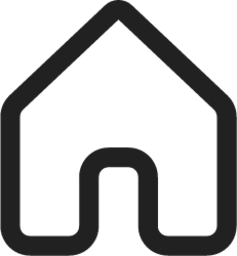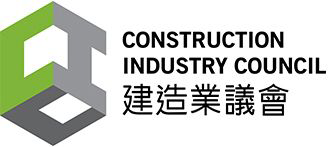
FEATURES OF SCHEME 2.0
Green materials in the Civil and Structural materials family primarily focus on upfront carbon reduction and the adoption of recycled and circular materials and processes.
Mechanical & Electrical & Plumbing (MEP) Products
Green products in the MEP products family concentrate on operational performance and the inclusion of innovative and smart elements. Energy and water resource management in manufacturing processes is a secondary focus.
Architectural Products
Green materials or products within the Architectural products family aim to identify environmentally preferable and circular materials that limit the generation and/or incorporation of harmful or toxic substances for humans or the built environment, while also optimising construction waste generation.
Landscaping Products
Green building materials/ products in the Landscaping products family primarily focus on the adoption of recycled and circular materials and processes, as well as the principles of a circular economy.
InnoSmart Products
Coming Soon
The Standard neither modifies nor supersedes existing laws and regulations. Compliance with the Standard does not substitute for, nor assure, compliance with any applicable laws or regulations. Adhering to all applicable laws and regulations is a prerequisite for the manufacturing and marketing of application building materials/ products. As required by the Trade Description Ordinance, the information provided must not be misleading. This commitment to transparency fosters demand for and supply of green products, simulating the potential for continuous environmental improvement driven by market forces.
While compliance with all requirements stipulated in the CIC Green Product Certification is voluntary, adherence to all applicable laws and regulations is essential for marketing products under the Scheme.
The FIVE Sustainability Aspects
To thoroughly assess green building materials/ products in line with the international sustainability goals and frameworks, the Scheme 2.0 introduces five sustainability labels listed below:
Carbon Label
The Carbon Label focuses on quantifying and reporting the carbon footprint of products (CFP). The goal of a CFP study is to calculate the greenhouse gas emissions generated from the production of the materials/products in terms of CO2 equivalent (CO2e).
For carbon-intensive materials, including cement, ready-mixed concrete, reinforcing bar and structural steel, and precast concrete, the certification scheme requires an assessment of their CFP value, benchmarking it against the industry's long-term decarbonisation goal.
For the other materials/products under this certification scheme, the manufacturers/suppliers are encouraged to quantify and report the CFP value to obtain the Carbon Label, demonstrating their commitment to the industry decarbonisation.
Resource Label
The Resource Label recognises efficient use of resources and compliance with standards, emphasising the incorporation of recycled or renewable raw materials, optimised water and energy consumption, and the adoption of circular economy principles.
Environment Label
The Environment Label recognises products that prioritise both human health and environmental protection. Certified products demonstrate a commitment to responsible manufacturing and the creation of healthier, eco-friendly options.
Performance Label
The Performance Label recognises products for their durability and functionality, promoting longevity and superior performance throughout their lifespan. This label encourages products to achieve performance beyond compliance.
InnoSmart Label
The InnoSmart Label recognises the use of innovative and smart technologies or practices to enhance productivity, reduce carbon emissions, and achieve exemplary environmental performance.
The Five Product Families
To facilitate easy identification of product categories, the Scheme 2.0 classifiess building materials/ products into five Product Families.
Civil and Structural Materials
Green materials in the Civil and Structural materials family primarily focus on upfront carbon reduction and the adoption of recycled and circular materials and processes.
Mechanical & Electrical & Plumbing (MEP) Products
Green products in the MEP products family concentrate on operational performance and the inclusion of innovative and smart elements. Energy and water resource management in manufacturing processes is a secondary focus.
Architectural Products
Green materials or products within the Architectural products family aim to identify environmentally preferable and circular materials that limit the generation and/or incorporation of harmful or toxic substances for humans or the built environment, while also optimising construction waste generation.
Landscaping Products
Green building materials/ products in the Landscaping products family primarily focus on the adoption of recycled and circular materials and processes, as well as the principles of a circular economy.
InnoSmart Products
Coming Soon
New Product Category: General Green Product Category
The General Green Product Category of the Scheme 2.0 serves as a transitional group for building materials/ products that are not yet included within the existing product families.
About the Assessment
This Assessment Standard (hereafter referred to as the “Standard”) outlines the assessment criteria and benchmarks that govern the application process and the awarding of recognition. Additionally, the Standard defines the assessment methods used to determine the grade of recognition for building materials/ products based on the required assessment information.
About the Assessment
This Assessment Standard (hereafter referred to as the “Standard”) outlines the assessment criteria and benchmarks that govern the application process and the awarding of recognition. Additionally, the Standard defines the assessment methods used to determine the grade of recognition for building materials/ products based on the required assessment information.
The Standard neither modifies nor supersedes existing laws and regulations. Compliance with the Standard does not substitute for, nor assure, compliance with any applicable laws or regulations. Adhering to all applicable laws and regulations is a prerequisite for the manufacturing and marketing of application building materials/ products. As required by the Trade Description Ordinance, the information provided must not be misleading. This commitment to transparency fosters demand for and supply of green products, simulating the potential for continuous environmental improvement driven by market forces.
While compliance with all requirements stipulated in the CIC Green Product Certification is voluntary, adherence to all applicable laws and regulations is essential for marketing products under the Scheme.
| Privacy Statement | Terms and Conditions | Personal Information Collection Statement | Disclaimer |



